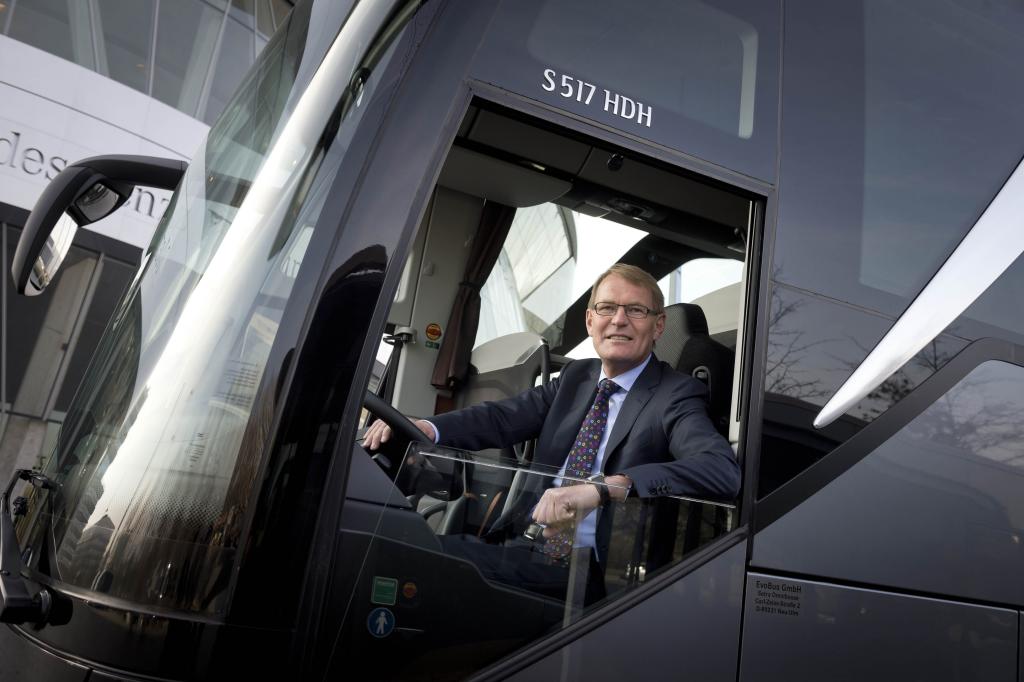Daimler Buses has completed business year 2013 as planned and returned to profitability. The Daimler AG division recorded operating profit of €124 million after posting an operating loss of €221 million in the previous year. Sales rose by five percent to 33,700 units (2012: 32,100), and revenues increased by four percent to €4.1 billion (2012: €3.9 billion). The company is looking to significantly augment sales and record a slight increase in earnings in 2014.
“Our efforts have paid off,” says Hartmut Schick, head of Daimler Buses, referring to the division’s business development. “We achieved the turnaround, which offers proof of the type of performance the entire team at Daimler Buses is capable of. We want to continue this successful development in 2014 by achieving further growth.” The sales increase solidified Daimler Buses’ leading position in its core markets. Sales growth was driven by both complete buses and bus chassis.
An increase in market share was achieved in Europe through the full availability of Mercedes-Benz and Setra Buses that comply with stringent Euro VI emission standards that went into effect in 2014. At 30.8 percent (2012: 28.3 percent), market share in Western Europe was the highest ever recorded. High demand for Mercedes-Benz buses, particularly the new Citaro urban bus, had a positive effect on sales in Germany, which increased by 20 percent to 2,400 units. Half of all buses sold in Germany last year were built by Daimler, whose market share in the country rose from 48.9 percent to 51.2 percent.
Sales in Turkey increased to 1,200 units last year (2012: 1,100). The market in Latin America (excluding Mexico) recovered appreciably following the introduction of the stricter Euro V emissions standard in 2012. Sales of Mercedes-Benz chassis in the region rose by seven percent to 19,100 units. With a market share of 41.6 percent (2012: 42.7 percent), Daimler Buses was able to maintain its leading market position in Latin America. However, demand in Brazil was below expectation due to uncertainty in the market caused by the political situation in the country.
An important focus in 2013 was the conversion of the complete European product range to Euro VI-compliant exhaust gas technology. The Setra TopClass 500 was introduced in the luxury touring coach segment, as also the Setra ComfortClass 500 – named Coach of the Year 2014.
The bus division successfully completed the GLOBE 2013 program by the end of last year, which focused on the systematic development of the European production network, the reduction of variable costs, and the optimization of overhead costs. A new-customer acquisition offensive with measures to improve after-sales operations resulted in record revenues for the unit.
The economic environment for Daimler Buses in 2014 will probably be marked by continuing modest growth as well as further sharp fluctuations. Exchange rate movements in various countries such as Turkey and Argentina will have a major impact on overall developments. Despite these uncertainties, the global bus market is expected to expand slightly. Also, market volume in Western Europe will probably increase slightly over last year’s level.
Diamler expects to substantially increase unit sales in 2014 and maintain its leading position for buses over eight tonne GVW in its core markets. The World Cup soccer championship and launch of new products in the high-volume school bus segment could lead to an increase in sales in Brazil. Sales in Europe are expected to remain stable.
“As things stand today, we believe we’ll be able to reach our targets for this year,” says Schick. “We’re satisfied with the current level of incoming orders, and we already know that our plants will be working to full capacity until the middle of the year. That applies to the production of urban buses as well as touring coaches. This is remarkable, if only because of the fact that in our sector the first half-year is traditionally slow because of the way the markets work.”
Daimler Buses also expects the restructuring of its used vehicle operations, under the new BusStore brand, to generate additional growth. BusStore has created a Europe-wide bus-focused network for marketing used vehicles. The corporation is strengthening its used bus business, and the division will offer customers a large selection of used vehicles from Mercedes-Benz and Setra – as well as all other common brands – from a single source.
Daimler has begun to strategise for the promising Indian market by building a new bus manufacturing facility in Chennai. The cornerstone of the plant was laid in March, 2014. The facility will initially have a manufacturing capacity of 1,500 units per year but can be expanded to produce up to 4,000 units annually. Daimler Buses is investing approximately €50 million in the project.
The plant’s range of products will include BharatBenz front-engine buses tailored to the high-volume bus market in India. The models will be built with a specially developed body from Wrightbus, headquartered in Ireland. A Wrightbus production facility will be constructed at the plant site. The Chennai plant will also manufacture Mercedes-Benz rear-engine buses for the premium segment.
India is the world’s second-largest sales market for buses after China. Despite a difficult market environment in India, sales of buses over eight tonne GVW totaled nearly 40,000 units in 2013, almost twice as many buses as were sold throughout all of Western Europe. In view of the projected population growth for the country, experts believe the demand for mobility solutions will continue to increase in India.












Leave a Reply